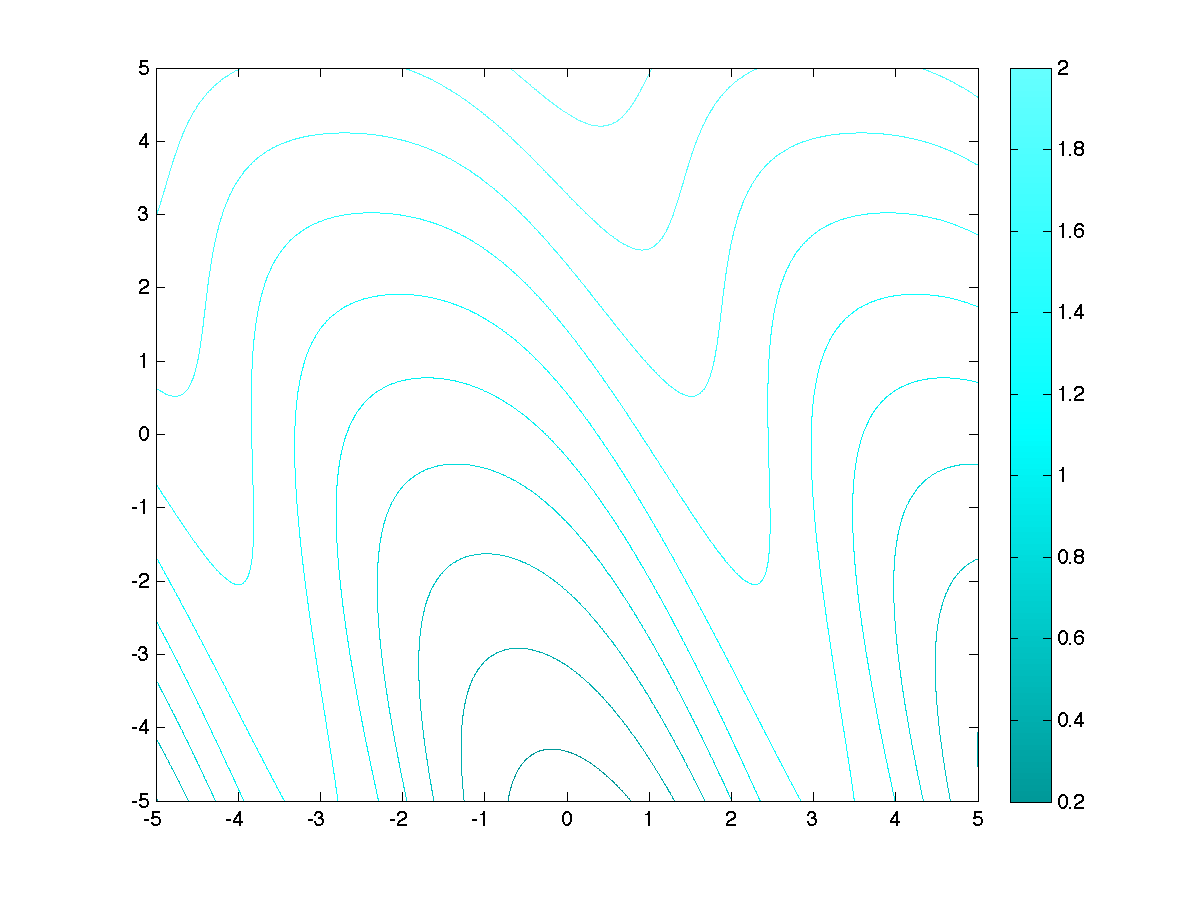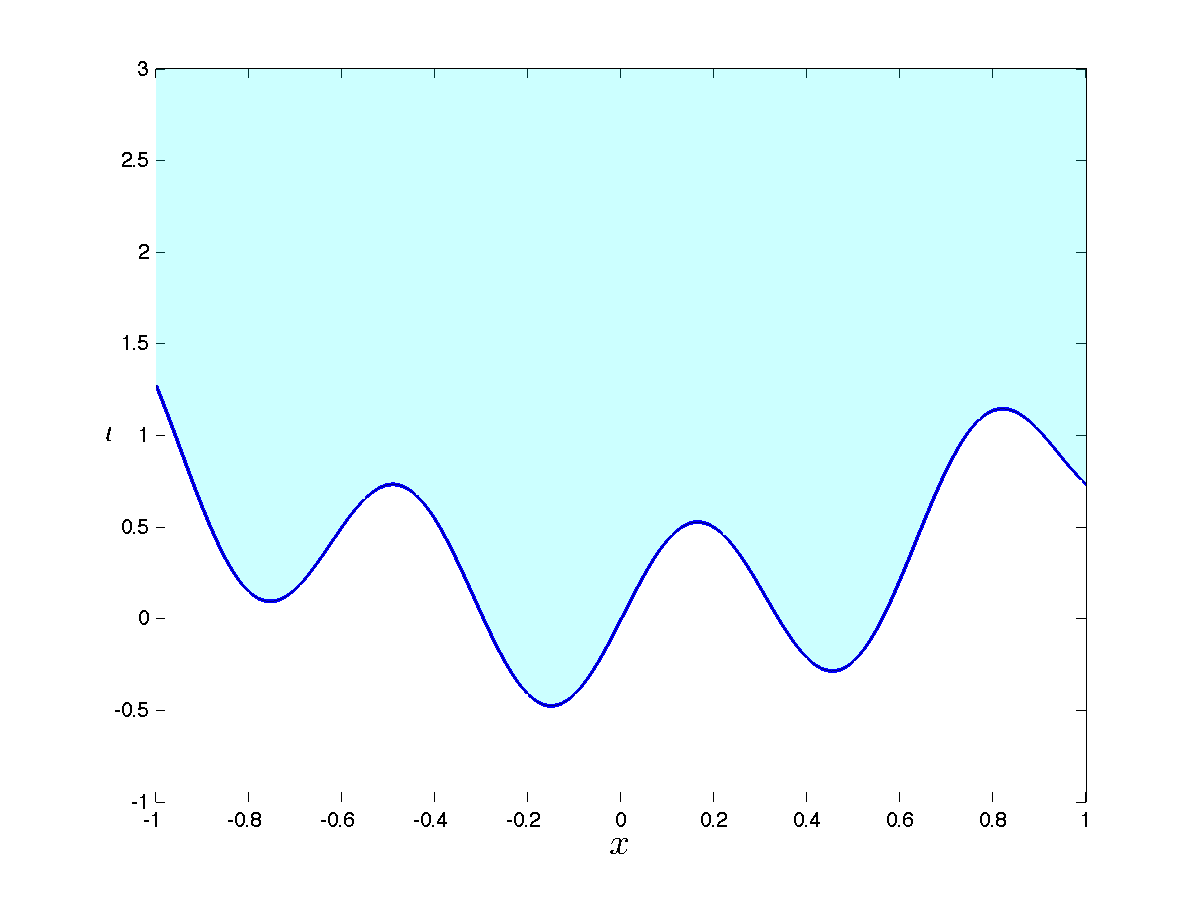Graph, epigraph, level and sublevel sets of a function
Consider a function  . We can define four sets relevant to
. We can define four sets relevant to  : the graph and the epigraph, both are subsets of
: the graph and the epigraph, both are subsets of  . Level and sub-level sets are subsets of
. Level and sub-level sets are subsets of  .
.
Graph
The graph of  is the set of input-output pairs that
is the set of input-output pairs that  can attain, that is:
can attain, that is:

Epigraph
The epigraph, denoted  , describes the set of input-output pairs that
, describes the set of input-output pairs that  can achieve, as well as ‘‘anything above’’ (epi in Greek means ‘‘above’’):
can achieve, as well as ‘‘anything above’’ (epi in Greek means ‘‘above’’):

Level sets
Level sets are sets of points that achieve exactly a certain value for  . Precisely, the
. Precisely, the  -level set of
-level set of  is defined by
is defined by

In two-dimensions ( ), the level sets are referred to as level curves.
), the level sets are referred to as level curves.
Sub-level sets
A related notion is that of sub-level set. This is now the set of points that achieve at most a certain value for  , or below. Precisely, the
, or below. Precisely, the  -sub-level set of
-sub-level set of  is defined by
is defined by

 |
Level and sub-level sets of a function |

 , with domain
, with domain  and value inside the domain
and value inside the domain  . The graph corresponds to the points in blue, and the epigraph is in light blue. The epigraph extends to infinity above the graph. Points outside the domain are not shown.
. The graph corresponds to the points in blue, and the epigraph is in light blue. The epigraph extends to infinity above the graph. Points outside the domain are not shown. .
.